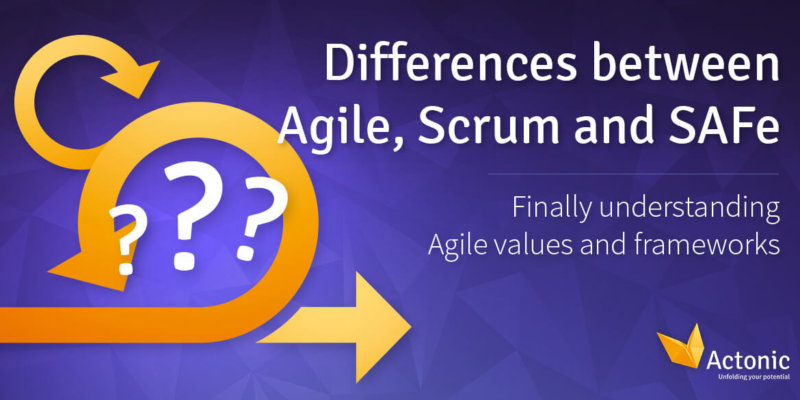What is Agile Working?
Agile working primarily means greater flexibility, faster adaptability to changes and closer teamwork than with classic working methods. In addition, the customer’s opinion is the most important asset: customers are already involved during the project process. They get a transparent and continuous insight into all processes, this way, a constant feedback loop is possible. This enables the team to respond dynamically to potential changes during the project and to fulfil all wishes to their full satisfaction.
In order to achieve initial project results as quickly as possible, the work is structured in sprints. These are short, iterative development cycles that can last from about a week to a month.
The Agile Manifesto: principles of Agile Project Management
In 2001, software development professionals described in the Agile Manifesto what they see as the framework of an agile way of working. 17 people who are highly respected in the Agile community signed their manifesto, which still forms the basis for Agile Project Management today.
To better understand Agile working, it is worth taking a look at the Agile values described below.
The Agile Core Values
-
Teamwork: Individuals and interactions are valued more than tools or processes.
-
Pragmatism: Functioning software is more important than comprehensive documentation.
-
Communication: Cooperation based on trust is more valuable than intensive contract negotiations.
-
Flexibility: Reacting quickly to changes instead of following a strict plan.
Advantages of Agile Working
After taking a closer look at the Agile concept, let us once again present the advantages at a glance:
-
Better results through dynamic organisation
-
Great flexibility in the face of complex and rapid changes
-
Independent work promotes the development of the employees and their loyalty to the company
-
Orientation towards the customer ensures trustful cooperation and product solutions that inspire
-
Frequent feedback loops promote an open and pleasant corporate culture
How does Scrum work?
Scrum is an agile method that originated in software development but offers advantages for many results-oriented projects. The framework works ideally for companies with simple organisational structures.
The word “Scrum” is, contrary to many expectations, not an acronym, but comes from rugby. It describes the situation when several players gather around the ball. This image fits the vision that individuals on their own cannot achieve excellent results in the modern, dynamic software world. Only as a team – when the ball is often passed back and forth – can we react dynamically to what is happening.
According to a study from 2020, which included the Koblenz University of Applied Sciences, it was found that 85% of all participants in the survey use Scrum as an agile method. This clearly shows the popularity of the Scrum framework, which is used to perfect productivity and flexibility in smaller teams.
In line with the agile approach, Scrum teams work completely self-organised in sprints. In these, partial solutions are developed with close customer involvement.
The Scrum Roles
Flat hierarchies help to simplify the project process, yet there are three Scrum roles that help immensely in organising the Scrum team.
-
Product Owner (What?)
-
Scrum Team (How?)
-
The Scrum Team consists of about two to nine members and organises itself. It is responsible for ensuring that customers receive a functional product at the end of the sprint. Analysis, drafts, development, tests and documentation are all part of the Scrum Team’s range of tasks.
-
Scrum Master (Process)
-
During the development process, the Scrum Master acts as a moderator. He or she monitors the progress of the sprint and communicates changes in the backlog and the wishes of the product owner to the Scrum team. The Scrum Master is fundamentally responsible for ensuring that the rules of the Scrum method are adhered to.



 Gain hands-on insights from live webinars
Gain hands-on insights from live webinars